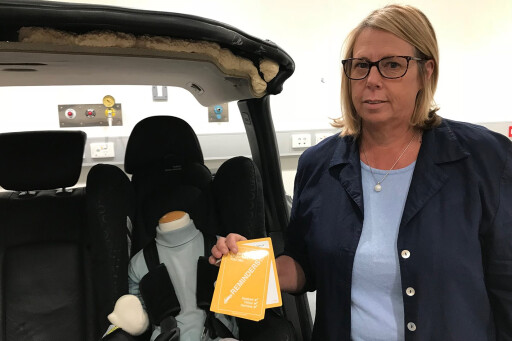
Arm rests on car doors offer an additional element of comfort for rear seat passengers, but they could also pose a risk to small children, according to Australian research.
The study by the Transurban Road Safety Centre at Neuroscience Research Australia (NeuRA), found that the height and shape of arm rests can influence the likelihood of head injuries during a crash, even when a child is correctly strapped into their car seat.

A team of researchers, led by Associate Professor Julie Brown, studied crash-test data and found the risk of head injury during a side collision can increase by up to 52 per cent depending on the height of the arm rest.
The team of scientists found that the position of the arm rest alters the movement of booster seats and this can influence head injury risk. A mid-height armrest was found to be most problematic compared with both low and high armrests. A completely flat door with no armrests was the safest, said the report.
“There are a huge range of arm rests and rear door shapes in current vehicles. Our work shows the need to find the best design to minimise injury risks caused by the door shape or position of arm rests,” said Associate Professor Brown.
 Associate Professor Brown Julie Brown
Associate Professor Brown Julie Brown
“This would make it less likely that a side-on collision will result in death or serious injury of a child.”
Associate Professor Brown had previously found that significant intrusion was a factor in almost three-quarters of all child occupant deaths on NSW roads over the past 10 years, thanks to new testing equipment developed by UNSW engineering students at the Transurban Road Safety Centre.
“This is the first time Australian researchers have been able to examine how child restraints function when there is an intrusion of the door from a side impact,” Brown said.
“This is an important development because side-impact crashes are responsible for most of the serious head injury that occurs to correctly-restrained children."

Brown's team is now looking to test rear door shapes commonly found in cars on Australian roads to determine which designs are safest.
She stresses that despite the latest findings small children are still safest in a suitable approved child restraint, with 35 of the 66 children who died in car accidents from 2007-16 either not wearing a restraint or one that was properly fitted.
With that in mind, the professor has some tips for parents to improve child safety while in the car.
Always wear a restraint
The simplest way to increase safety is to make sure children are always restrained.
“Parents might be reluctant to fiddle with child seat restraints for short trips,” said Brown. “But it is vital that parents always ensure child seat are being used regardless of how long your child will be in the car.”
Properly fitted straps
Restraints should properly fit a child with no loose or twisted straps. A common mistake is to let children put the harness or seat belt under their arms. This can significantly decrease the effectiveness of restraints during a car crash.
Children must remain upright
Children and young people need to remain upright to be properly protected by a seat belt and should never lie across the back seat to sleep.
“While it might be challenging, children should be encouraged to sleep while seated so that they remain protected by their restraint,” said Associate Professor Brown.
Children aged over seven may still need a booster
In some cars, children older than seven and up to 12 years old may still need a booster seat to achieve optimal seat belt fit.
“A lot of parents move their children out of the booster seats as soon as possible. But it’s important to not move your child to a seat belt until they can achieve a good seat belt fit,” said Associate Professor Brown.
“This will depend on the size of your child and the car in which they are travelling. You can help improve road safety. The simplest way to check is to use the 5-step test.”
COMMENTS